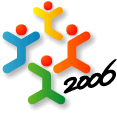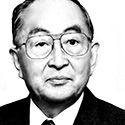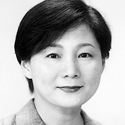

Rehabilitation and UD for “total human restoration”
Satoshi Ueda
Adviser, Japanese Society for Rehabilitation of Persons with Disabilities : Japan
People tend to think rehabilitation as “training for functional recovery”, but the original meaning of the word is to “restore rights, honor and dignity” and it is a commonly used word in Western countries. In the case of diseases and disabilities, the true objective of rehabilitation is to “restore rights to live as a human being” (“total human restoration”) for people who have difficulty in living a life worth a human being due to their diseases and disabilities. The professionals support them in creating a new and highly independent purposeful life based on their own self determination. To achieve this objective, professionals of various fields, including medical, educational, social and vocational, need to cooperate, and UD is one of the important members among them. Uniting these various areas is ICF (International Classification of Functioning, Disability and Health, WHO, 2001) as a “common language” for the “total picture of living as a human being” and it will shed light on the significance of UD as a “interaction between functioning and environmental factors”.

“Functioning-promoting Assistive Care” and universal designs
Yayoi Okawa, M.D.
Director, Department of Functioning Activation, National Institute for Longevity Sciences, National Center for Geriatrics and Gerontology : Japan
Personal assistive care is important not only in the services of “National Insurance for Long-term Care” but also in medical care in general. In either case, assistive care may trigger “low-activity diseases” (“disuse syndrome”) and result in a “vicious circle of declining of functioning” if you consider assistive care only as a way to “help people do what they can’t do” and to “do things for them”. Assistive care is for the “promotion” of functioning (an ICF concept), and it is important to come up with the optimal combination of human and physical assistive cares based the goal-oriented approach. Especially, since functioning of users/patients are highly individual, so called “barrier-free” environments may turn into barriers and people who should be able to walk may be made wheelchair-bound if you do not respect their individual differences in the functioning. Including “Preventive Assistive Care” that will be increasingly important in a near future, I would like to discuss “how to make use” of universal designs for “functioning-promoting assistive care”.
